t r i g l a v s k i r o d a
7



























THE WONDERFUL WORLD OF SEEDS


FLOWER QUIZ















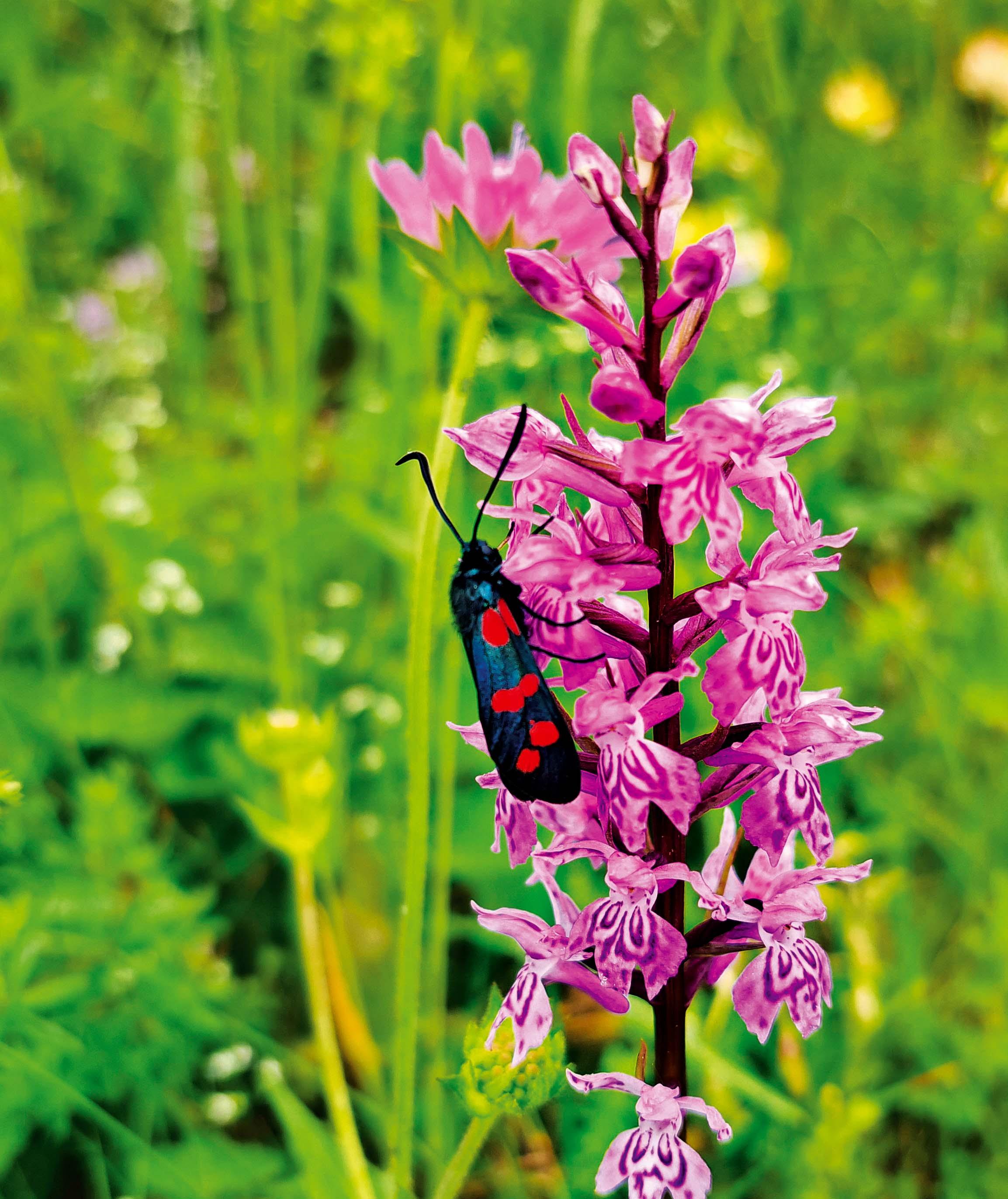
THE COMMUNITY OF SCHOOLS
JUNIOR RANGER
POWERFUL, MYSTERIOUS AND ALLURING NATURE



SEEDS – ALL SORTS AND SIZES




MEET THE CIKA CATTLE, DREŽNICA GOAT AND BOVEC SHEEP

1 TRIGLAV NATIONAL PARK
NEWSLETTER OF THE COMMUNITY OF SCHOOLS OF THE JULIAN ALPS BIOSPHERE RESERVE 2022
2023
The heart of the Julian Alps Biosphere Reserve
TRIGLAV NATIONAL



PARK is one of the oldest and largest national parks in Europe. The main objective of the national park is protection of valuable natural assets and conservation of outstanding cultural landscape. Triglav National Park has become one of the most widely recognized and popular national parks in Europe. Our national park is much more than the mountain summits: it is the scent of wild flowers, gray limestone, precipices, tender needles of a larch tree, cold water from a brook, birdsong, steep meadows, snow frost, clear air and the quietness you can feel. Triglav National Park is also the people who live in the park or visit it.
The year 2024 will mark a major milestone for Triglav National Park, the Julian Alps area, and nature conservation in Slovenia. We will celebrate 100th anniversary of the signing of the lease agreement that formed the basis for the establishment of the Alpine Protection Park, the predecessor of TNP.
Triglav National Park, the heart of the Julian Alps Biosphere Reserve, is famous for its pristine natural environment. Of course, people play an important role in preserving its natural and cultural assets. Without human activity, we would not know about highland pastures grazed by cattle during summer months, homesteads and other elements of cultural landscape, or traditional agricultural produce that are a vital ingredient of our breakfasts, lunches and dinners.
Talking about food – it is hard to believe that many of our meals actually start with tiny, or even miniscule, seeds that sprout and grow into plants. Seeds – the central topic of this newsletter – come in a myriad of sizes, colours and shapes, and the plants that develop from them proudly perform their
intended role in their habitats.
Small will always grow into big – as you, dear readers, are evolving into responsible and proactive guardians of nature. Your curiosity is the key to new knowledge, and knowledge is the guarantee that nature will be admired (and its fruits enjoyed) by young people who will visit Slovenia’s only national park in many years and decades.
We hope this newsletter and the activities proposed will bring you lots of fun and enjoyment.
What have we done?
Junior rangers are children from the Julian Alps Biosphere Reserve who are eager to discover nature and our mountains, admire their beauty, and respect and protect them.

This year the existing team of 21 Junior Rangers expanded to include 17 new candidates.
did you know?
Triglav National Park has been part of the Federation Europarc’s Junior Ranger Project since 2002.


New members are formally admitted on the International Mountain Day in December.


THE COMMUNITY OF SCHOOLS of the Julian Alps Biosphere Reserve

In recognition of the outstanding coexistence of man and nature in this mountainous part of Slovenia, UNESCO awarded the Julian Alps with the title Biosphere Reserve in 2003.
The main aim of the Biosphere Reserve is to carry out sustainable research, education and management of natural resources. Tourism, forestry or traffic can be potentially harmful, and we should make sure that our activities do not have a negative effect on the natural environment.
In nature, all is connected. Close connections also exist between the pupils, teachers, headmasters and other staff of the schools that are part of the Community of Schools of the Julian Alps Biosphere Reserve and the Triglav National Park Public Institute.
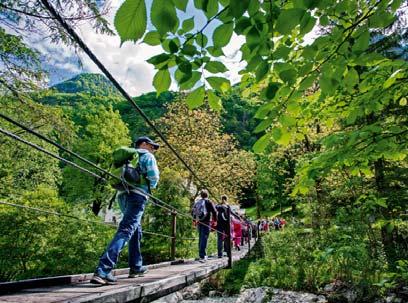

We have done many things together: nature days, workshops, camps, field trips, traditional Belar Days and the Triglav Treasury, children's newsletter and many learning tools ranging from raised beds to interactive boards and maps, all focused on a single goal: to learn, discover and protect the paradise at the foot of Triglav.
For the year 2023, the following primary schools have received the Quality Mark: Bled Primary School, Gorje Primary School, Koroška Bela Primary School, Most na Soč Primary School, Primary School Polde Stražišar Jesenice, Žirovnica Primary School, Podbrdo Primary School, Bohinjska Bistrica Primary School, and Lesce Primary School.


We thank the recipient schools for their dedication and active participation!
We would like to inform other schools that a new call for applications will be available in the 2023/2024 academic year.
What’s ahead?
BELAR DAYS PARTICIPATION IN THE YOUTH AT THE TOP PROJECT

December 2022 – Admission of new Junior Ranger candidates
Junior ranger Triglav National Park Quality Mark












What's going on in the Community of Schools?
Help me find the right way to my mom.
January 2022 – Winter trip to Krnica
March 2022 – Visit to the Center of Large Carnivores - Dina Pivka
From the life of a park ranger

On a lovely autumn afternoon, after sunset, I went to a hunting observatory located in a beautiful forest clearing just a few minutes from the village. Slowly and carefully, I climbed into the observatory and sat down to marvel at the stunning autumn views. Nearly an hour later, a doe ran into the clearing, followed by a joyfully springing fawn. Having observed the deer family several times, I noticed they were missing a member: the fawn’s brother. I sat quietly for some time hoping the other fawn would join them, but he never did. “Did something happen to the little guy?” I wondered. “Must’ve been a jackal!” I felt sorry for the poor thing.
The doe and the fawn grazed in the clearing for some time, and then they set off for the woods. Next morning I took the same path to the observatory but I didn’t climb to the top. Instead, I walked on. After about 10 minutes, I suddenly heard an unusual sound. I looked around and saw a large abandoned water well that had stood there since the First World War. The call seemed to be coming from the well. I got closer and saw the fawn. The hole was simply too deep for the youngster to jump out and it was calling for help desperately. I took off my backpack, climbed into the well, grabbed the helpless animal gently and lifted him out to safety. In an instant, he ran a few meters away from the well, stopped briefly, gave me another look, and then hurried away to look for his mom and brother. Something must have startled him, and he fell into the well by accident. When I returned to the observatory a few days later, the doe came to the clearing again, with both her young. I was really glad that I was able to rescue the fawn from his captivity and reunite the family.
that I was able to rescue the fawn

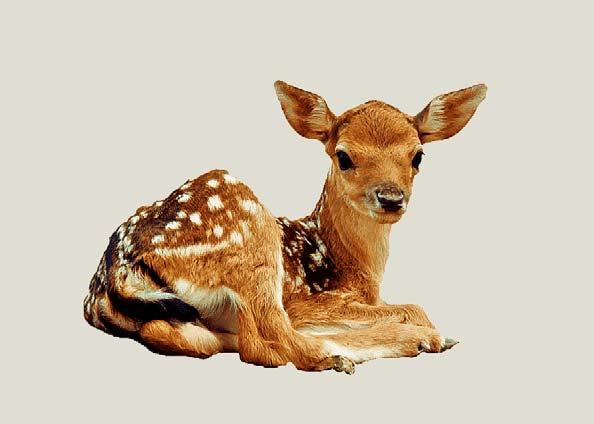
2 3 TRIGLAV NATIONAL PARKTRIGLAV NATIONAL PARK
Petra Mlakar, PR Officer for Triglav National Park Public Institute
t
i
k
r
g l av n a t i o n a l p a r
Belar Days Free workshopsFarmhouse Pocar
AUTUMN
A B C D
SUMMER CAMP AT THE PLANINA PRI JEZERU PASTURE
TRIP TO RESIA
I
Matic Kravanja park ranger in the Trenta Valley “THE LITTLE CAPTIVE”
Powerful, mysterious and ALLURING NATURE
Discover and admire nature's richness of the Julian Alps! Breathe in newly-awakened nature in the spring, enjoy the pleasant shade of forests in the summer, and let yourself be enchanted by the colours of the autumn.

Open your eyes and ears, and marvel at what you see and hear. Look, there’s a bird’s nest!










What is that thing moving along the forest floor? A frog! What a lovely flower! Did I just hear a forest dwarf? Who knows...








SOČA TRAIL





The trail features seven footbridges across the river.






ALPINUM JULIANA
BOTANICAL GARDEN
Dwarf Cojzek will take you through the garden, and information boards describe the interesting features of the local flora and fauna.
Starting point: Trenta Difficulty: easy

‘TA LIPA POT’ –


























































The Beautiful Road of Resia
Let fairytale Resia enchant you with its nature, history and local dialect.

Starting point: Bar All‘Arrivo in Solbica/Stolvizza, Italy/Resia Difficulty: easy














did you know?
Prealpi Giulie Nature Park and Triglav National Park are connected by rich biodiversity, history and culture into the Transboundary Ecoregion Julian Alps.



SAFELY TO THE MOUNTAINS
There is nothing more beautiful than spending a day in the mountains. Before you set off make sure you have planned your route properly. It will save your energy and enhance your mountain experience.
MANGRT NATURE TRAIL


A hike under the third highest mountain in Slovenia.
Starting point: by bus to the Mangrt Saddle
Difficulty: easy
EQUIPMENT Use only equipment designed for hiking in the mountains. Wear appropriate hiking boots that cover the ankles.
WEATHER - Can be unpredictable. Bring spare warm clothing and dress in layers.
BE A RESPECTFUL VISITOR - When you come to the mountains, respect the inhabitants of this environment. Carefully observe the nature around you. You won’t believe what nature will reveal to you if only you stand still and quiet for a few moments, listening to nature’s sounds or observing it through your binoculars. yers.
Share


JAVORCA
The memorial church of the Holy Spirit in Javorca is said to be the most beautiful

First World War monument in the Republic of Slovenia.
Starting point: Srednica pasture
Difficulty: easy
INFORMATION - Before going on a hike, gather as much up-to-date information as possible about the condition of the trails, open huts, and weather. In case of an accident, call 112.

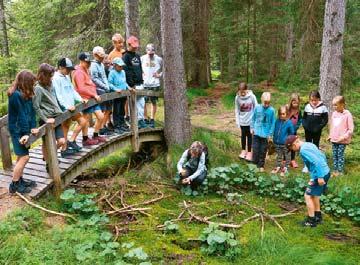




































a hike, ion he se of an


TRAILS - Due to loose gravel on the trails, there is a high risk of slipping, especially in exposed areas and in rainy weather.

On a hot summer day it is refreshing to walk past the majestic Peričnik Fall.
Starting point: Slovenian Alpine Museum, Mojstrana Difficulty: easy, but quite long

POCAR


Its exterior and interior, the rich collection of exhibits and the story of the Pocar family paint a picture of the life at the foot of Mt. Triglav from centuries ago to the present day.
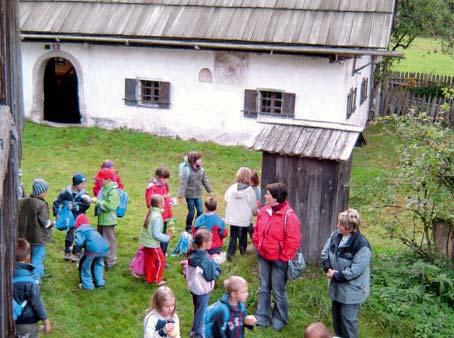
Starting point: Zgornja Radovna
Difficulty: easy
easy, but quite long AROUND LAKE BOHINJ Walk around the largest lake in Triglav National Park, and finish you hike with a stop at the TNP Center in Bohinj. Starting point: Ribčev Laz Difficulty: easy, but quite long GORELJEK BOG NATURE TRAIL The bog is also home to carnivorous plants. Starting point: Goreljek, Pokljuka Difficulty: easy POKLJUKA GORGE You will need to climb through a hole, cross a natural bridge and walk along the galleries. Starting point: Jela – Krnica or Zatrnik Difficulty: easy
did you know?
TRIGLAV NATIONAL PARK is the only national park in Slovenia.
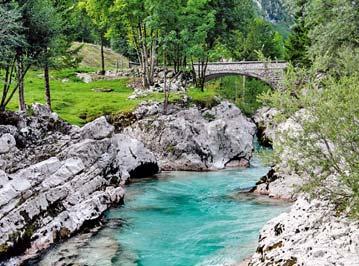
The first protected area of nature in Slovenia was established in the Triglav Lakes Valley in 1924.
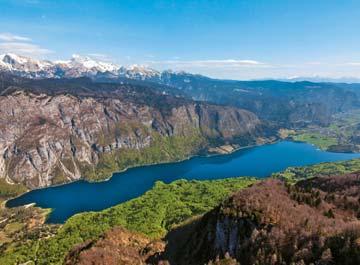

The number of living pastures, that is pastures where cattle grazes and cheese is made, is much lower today that it used to be.



Starting point: Podkuk pasture







Difficulty: easy
MOVED BY NATURE
You
Leave your vehicle in one of the designated parking lots. There are plenty of them within the park area.

Use public transportation to visit the park.


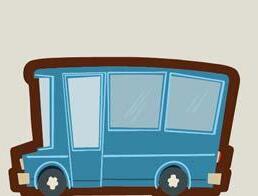







Explore it! Admire it! Respect it!
Visitor Centres
INFORMACIJSKO IN IZOBRAŽEVALNO SREDIŠČE DOM TRENTA Na Logu, Trenta, Soča
T: + 386 5 388 93 30
E: dom-tnp.trenta@tnp.gov.si
CENTER TRIGLAVSKEGA NARODNEGA PARKA BOHINJ
Stara Fužina 37-38, Bohinjsko jezero
T: +386 4 578 02 45
E: info.bohinjka@tnp.gov.si
INFOCENTER TRIGLAVSKA ROŽA BLED
Ljubljanska cesta 27, Bled
T: +386 4 578 02 05
E: info.trb@tnp.gov.si






SLOVENSKI PLANINSKI MUZEJ
Triglavska cesta 49, Mojstrana
T: +386 8 380 67 30
E: info@planinskimuzej.si













POCARJEVA DOMAČIJA
Zgornja Radovna 25, Mojstrana
T: +386 4 578 02 00 (uprava Triglavskega narodnega parka)



E: triglavski-narodni-park@tnp.gov.si
INFO TOČKA TRIGLAVSKEGA NARODNEGA PARKA
ZELENA HIŠA, TIC KOBARID
Trg svobode 16, Kobarid
T: +386 5 380 04 90
E: info.kobarid@dolina-soce.si
4 5 TRIGLAV NATIONAL PARKTRIGLAV NATIONAL PARK RADOVLJICA BLED VOJE GORA BOVEC PODBRDO VOGEL ARAVA E A R A V A E O L O V R A D OLI A RIGLAV IHJEZER PO L J U A IDRIJCA E VI A PLA O A B O H I J J E L O V I C A O R I ICA RADOV A M E A LA Podružnica Begunje OŠ Antona Janše Radovljica OŠ Antona Tomaža Linharta Radovljica Podružnica Mošnje Podružnica Ljubno Slovenski planinski muzej Pocarjeva domačija Infocenter Triglavska roža Bled Center TNP Bohinj Informacijsko izobraževalno središče Dom Trenta Zelena hiša TIC Kobarid OŠ Josipa Vandota Kranjska Gora OŠ 16. decembra Mojstrana OŠ Toneta Čufarja Jesenice OŠ Prežihovega Voranca Jesenice OŠ Poldeta Stražišarja Jesenice OŠ Koroška Bela Jesenice Podružnica Blejska Dobrava OŠ Gorje OŠ Žirovnica OŠ prof. dr. Josipa Plemlja Bled Podružnična šola Bohinjska Bela Podružnična šola Ribno OŠ F. S. Finžgarja Lesce OŠ Staneta Žagarja Lipnica Podružnica Ovsiše OŠ dr. Janeza Mencingerja Bohinjska Bistrica Podružnica Srednja vas OŠ Simona Kosa Podbrdo OŠ Dušana Muniha Most na Soči Podružnica Podmelec Podružnica Dolenja Trebuša Podružnica Šentviška gora OŠ Franceta Bevka Tolmin Podružnična šola za izobraževanje in usposabljanje otrok posebnimi potrebami Tolminu Podružnica Anton Majnik Volče Podružnica Kamno OŠ Simona Gregorčiča Kobarid Podružnica Drežnica Podružnica Smast Podružnica Breginj OŠ Bovec Podružnična šola Soča Podružnična šola Žaga CŠOD Bohinj CŠOD Kavka CŠOD Soča CŠOD Planica CŠOD Trilobit CŠOD Kranjska Gora SOLBICA / STOLVIZZA REZIJA KANIN UČJA Prato di Resia Ravanca Na Bili/Resiutta K SLAP BARMAN SLAP GORIUDA ITALY SLOVENIA P IUDA A Triglav National Park Julian Alps Biosphere Reserve Prealpi Giulie Nature Park, Italy
#otrocivnarodnemparku
a photo of your journey or yourself on the social media platforms Facebook and Instagram with the hashtag
TRIGLAVSKA BISTRICA TRAIL
HOMESTEAD
RAZOR PASTURE
e trails, cially in can also access the Julian Alps Biosphere Reserve by bus or train. If you are coming by car,
bring a bike with you and explore the area’s marked bike routes.
Starting point: Hut at the source of the Soča River Difficulty:
In summer months you can move to the starting point or the destination of your trip using one of the local hop-on hopoff buses you can ride for the entire day for a very small fee. When planning your trips, use the QR code and check the bus schedules.
The wonderful WORLD OF SEEDS
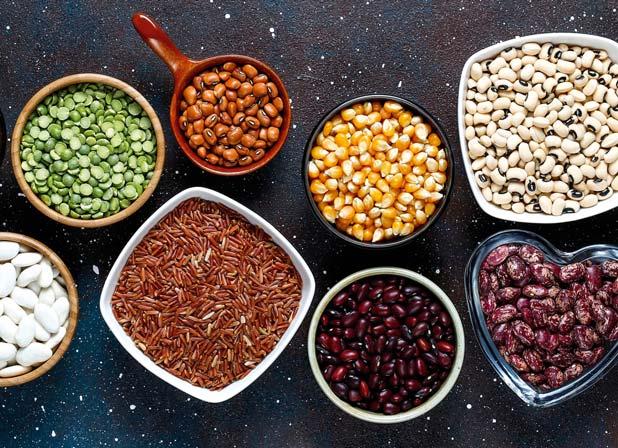
Can you imagine a day without bread? Goulash without pepper? Salad without oil? Holidays without chocolate? It's not only the fruit but also the seeds of plants that we can make good use of. In this new issue of our newsletter, our aim is to take a closer look at seeds and to remind you why they are so very important. No doubt at some stage we have all 'blown' a dandelion flower. But do you know why dandelions have 'flying' seeds? Have you ever thought about how far the wind carries the seeds of orchids? Have you ever seen it really happening? How are these seeds actually formed? Imagine a colourful spring meadow where different coloured flowers grow. Or a meadow which is mainly just one colour. Hmm, why is there such a difference?
You will find answers to all these questions and more in this issue, in which we familiarise readers with the Life for Seeds project. The project is focusing on establishing a seed bank of 300 typical species of three priority habitat types that are found in Slovenia. Two of these habitat types are present in Triglav National Park, where restoring meadows that are overgrown is part of our work. In summer, we will pick seeds in order to fill our seed bank, and we also hope that we will inspire other members of your family to collect seeds, because we could certainly do with some help in restoring the meadows!
Vida and Lan ask questions,
Vida: How are seeds formed?

Mina: Seeds are part of plants, and they are formed during the reproduction of plants. Most plants have a flower, where the male and female reproductive organs are located. The male part is called an anther and the female part is a pistil. A plant must be pollinated before fertilisation can occur. This means pollen must be transferred to the pistil, which then leads to the development of a new fruit or seed.


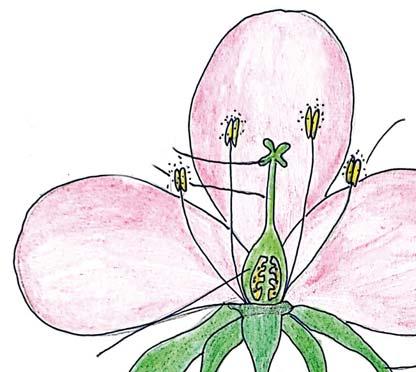
Vida: What kind of seeds are there?
National Park.
really diverse range of seeds. The first seed bank was established in Russia in 1926.
Vida: So many banks and so many seeds! But which is the biggest?
did you know?
A habitat is a special place where a species lives. It is the home of a species. Habitat types do not refer to single species but to multiple species living in the same type of environment.
Mina: Seeds come in different shapes, colours and sizes. The shape is adapted to the way the seeds are spread, so the fruits (seeds) spread by animals are usually juicy and brightly coloured. Animals eat the fruits, and usually excrete the undigested seeds far away from the plant on which they grew. Examples of such seeds are yew, black elder and cherry.
Seeds that are spread by water contain a lot of air so they don’t sink. Seeds that are spread by the wind usually have tiny hairs (dandelion, willow) or ‘wings’ (maple).


Some seeds are so heavy that they just fall to the ground, typically, coconut trees. These seeds have waterproof shells that allow them to be carried by rivers or seas to a faraway location where they will grow into a coconut tree.
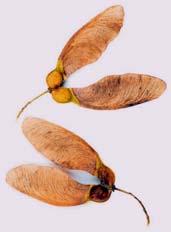
Lan: Why are seeds so important?
Mina: To answer this, I’d like to go back to the previous question, asked by Vida, and say that in a way, we distinguish between the seeds of wild and domesticated plants. Wild plants are those found outdoors in nature, such as seeds of various flowers, herbs and trees, whereas domesticated plants are those that are grown for food. There are numerous reasons why seeds are important, one of which is certainly that all plants that are nowadays grown for food have ‘ancestors’ in plants found in the wild. The great genetic diversity of wild plants that live freely in nature allows the development of new, slightly different plants!
Vida: So, why do we store seeds?
Mina: I read somewhere that every year up to 15,000 plant and animal species are lost. And just think that in Triglav National Park there are around 1,600 plant species! It’s hard to imagine, isn’t it, that some of these species can also be lost? Can you imagine what it would be like if the whole of national park was to be ‘taken over’ by just two or three plants? Awful, right?
Getting back to the question ... seeds are stored in order to protect biodiversity, which is decreasing due to human intervention in nature. That is why a lot of attention is being paid to seed banks, where seeds are stored and can be sown again whenever needed; this way the seeds are also preserved.
did you know?
There are around 3,500 plant species in Slovenia.
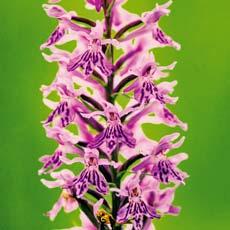
Mina: The biggest seed bank is in Svalbard, Norway. It is called the Svalbard Global Seed Vault, is located on the island of Spitsbergen and was built in 2008. The 120-metre-long bunker, built into rock and ice, was designed so that not even an asteroid or nuclear bomb could damage it, although it was affected by flooding in 2017!
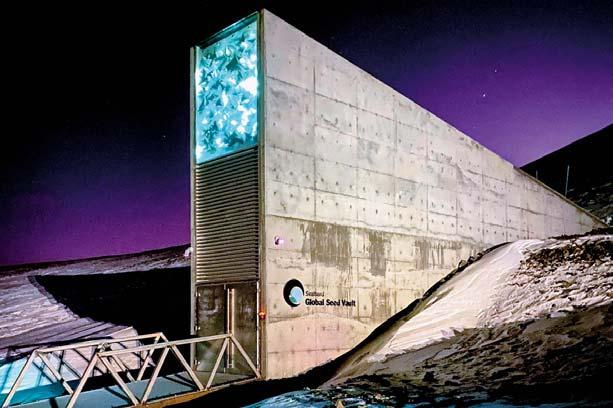
Lan: Do we have such a bank in Slovenia?
Mina: Yes, there are quite a few of them, but not as big. Four institutes are involved under the auspices of the Slovenian National Gene Bank, as described below:
The Agricultural Institute stores indigenous Slovenian crop varieties.
The Slovenian Institute of Hop Research and Brewing keeps seeds of medicinal and aromatic plants and hops, some of which are kept in the form of tissue cultures.
The Department of Agronomy at the Biotechnical Faculty at the University of Ljubljana keeps crop seeds and also has the seeds of fruit plants in its storage plantations.

The Faculty of Agriculture in Maribor maintains a plantation of fruit trees, berries and vines. The seeds are stored in various types of packaging, in plastic and aluminum bags, or in glass jars.

The largest garden for agricultural plants in Slovenia is located in the Ptuj Selection and Experiment Centre, which preserves around 5,400 seeds of indigenous Slovenian species.
Slovenia also has a small seed bank of wild plants, which is located in the Ljubljana Botanical Garden, where around 3,000 plant species are kept. The seeds are stored at -18°C and account for more than 20 percent of the species of the country’s domestic flora – both endemic and endangered plant species. Storage of the plants began in 1810.
In order for a plant or species to survive, a seed must be formed, which requires reproduction. And how do plants reproduce? Flowers are responsible for plant reproduction.
POLLINATION OR FERTILISATION?
When a grain of pollen from a plant lands on the stigma of a pistil, a tube (or pollen sac) sprouts from the grain of pollen, which then grows to the egg cells in the ovary. When these two cells come together (from the pollen grain and the ovule), it is said that fertilisation has occurred.

FERTILISATION: After the male and female cells have united, a zygote (a fertilised ovum) is formed. The germ of a new plant begins to develop from the fertilised egg, and a seed is formed. The germ has reserve food, surrounded by a seed coat. The ovule grows and develops into a fruit.
did you know?
Storing seeds at -18°C preserves their ability to germinate for over 100 years, whereas storing them at 4°C enables them to be stored over the mid- to long-term, usually 10 to 20 years.
Mina: Have you ever heard of these codes?
Vida: No!
Mina: We will mainly focus on two types within Triglav National Park. According to existing sources, 6210(*) was once the most widespread type of grassland in Slovenia and is an important habitat for orchids. In those days, the lack of resources and logistics to cultivate arable land meant there were fewer livestock, farms had no agricultural machinery and less fertiliser was used. This is why the share of extensive dry grasslands was higher compared to arable land. However, the agricultural revolution in the 20th century meant that the situation changed drastically and this habitat type is in sharp decline. That is why collecting seeds is part of the project!
Mina: Do you know orchids?
Vida and Lan: Sure we do!
Lan: So, there isn’t any money in a seed bank?
Mina: No, there’s no money. Can you imagine having to convert seeds into money? How could their value be estimated? Have you got any ideas?
There are around 1,750 seed banks in the world, which store a
Over one million packets of seeds, consisting of 5,000 different species from throughout the world, are stored in the seed bank. The seeds are stored at a temperature of -18°C; these conditions mean that the seeds can be stored for several hundred years.
The biggest seed bank of wild plants is the Royal Kew Gardens Millennium Seed Bank in Great Britain, which stores the seeds of 2.4 billion plants belonging to 39,100 plant species. The seeds are stored at -20°C and the seed bank is also protected from floods, radioactive radiation and bomb attacks. This seed bank represents the most diverse genetic resource of wild plant species on Earth and is also considered a ‘global insurance policy’ for the storage and preservation of seeds of common, rare or endangered useful plants.
Lan: Wow, so many banks and so many seeds! I read somewhere that seeds are also stored in colder places. Do you know anything about that?
Mina: This is a process called cryopreservation. The seeds are deep frozen and stored at -196 °C with the help of liquid nitrogen, which means they can be stored almost indefinitely.
Within the project that is currently underway within TNP, we will also establish a seed bank of plants that are disappearing from Slovenia’s meadows, especially those characteristics of Natura 2000 nature conservation priority habitat types with codes 3180*, 6210(*) and 6230*.
did you know?
Corn evolved from its distant ancestor, a wild plant from the grass family called teosinte. Through domestication and selection over thousands of years, people managed to adapt it to their needs, so that it had larger cobs and larger and more edible grains.
Mina: The second habitat type common to Triglav National Park is 6230*, i.e. species-rich grasslands, dominated by mattgrass (Nardus stricta), which are more extensive only in the Karavanke mountains and in certain parts of the Alps (e.g. Slemenova špica). They are among the most endangered species, precisely because of their spontaneous tendency to become overgrown as a result of the abandonment of mowing and/or grazing, especially in the Karavanke and Pohorje mountains, as well as in Carinthia. The constant expansion and improvement of ski slopes, as well as artificial snowmaking, pollution of local waters and physical damage to the grass and greening by using inappropriate seed mixtures permanently destroy these habitats. To a certain extent, these habitats are also threatened by mountaineers, as walking greatly damages the grass turf.
And there’s more … All these habitat types have another extremely important function! They provide a shelter or home for a wide variety of insects and birds, which are gradually disappearing as these areas are abandoned or becoming overgrown, or because of too frequent mowing, which means they cannot nest, as the constant disturbance in these meadows discourages them from making a home.
did you know?
Certain species (e.g. the Soča trout, Zois’ bellflower, Alpine sea holly) can only be found in a specific area. These species are known as endemites
It is precisely because of these facts that within the project we will measure our success in restoring meadows based on three indicators: vegetation, birds and insects. By making an inventory of species!
Vida: Would it be possible to see how seeds are gathered?

Lan: That would be interesting!
Mina: Of course! The only problem is that almost all the plants whose seeds we will be collecting are harvested in the middle of summer, when children are on school holidays! Perhaps we could arrange for you to sow some of the seeds collected during the summer, before winter? Do you have any space in front of the school?
Vida and Lan: Yes, we do!
6 7 TRIGLAV NATIONAL PARKTRIGLAV NATIONAL PARK
which are answered by Mina, an expert from Triglav
EGG CELLS STIGMA POLLEN TUBE SEED OVULE ANTHER PETAL SEPAL INTEGUMENT (OUTER LAYERS OF THE OVULE) MALE REPRODUCTIVE CELLS - POLLEN GRAINS FEMALE REPRODUCTIVE CELLS – PISTILS FEMALE REPRODUCTIVE ORGAN OVARIES
YEW DANDELION
THE SEED BANK OF SVALBARD GLOBAL SEED VAULT IN NORWAY
THE ROYAL KEW GARDENS MILLENNIUM SEED BANK IN GREAT BRITAIN The project LIFE FOR SEEDS (LIFE20 NAT/SI/000253) is cofinanced by the European Union’s LIFE Programme, Sigrid Rausing Trust and the Ministry of Public Administration.
THE AGRICULTURAL INSTITUTE
What is the difference between a seed and a fruit?

What does that make a cone?
Which plants catapult their seeds?

SEEDS All sorts and sizes
Pollination is a key part of plant reproduction. The process involves the transfer of pollen from the pistils (male parts) to the pollinator, who then carries the pollen to another flower where it sticks to the stigma (female part) of the flower. The fertilized flower later yields fruit and seeds.
did you know?
Certain plants have tiny flowers that are clustered into one big flower called inflorescence.
Plants often use asexual reproduction, which means that a part of a stem, root or leaf of the parent plant regenerates into a new plant.
All seed-bearing plants are categorized as seed plants. There are two main groups of seed plants: gymnosperms and angiosperms.

The seeds of gymnosperms are held in cones, e.g. spruce, while in angiosperms seeds are enclosed in fruits. A fruit consists of a seed or seeds and a receptacle.

When we look at plants, we see immovable organisms that spend their whole lives in one place, rooted into the soil. But plants travel, too. Seeds and fruits are carried by animals, wind or water. The shape of the seeds and fruits is adapted to the mode of transportation.
did you know?
Certain seeds need to pass through an animal digestive system in order to germinate.

Animals can carry seeds on their fur or feathers. For that purpose, some plants have developed special ‘clinging’ structures such as hooks or spikes.
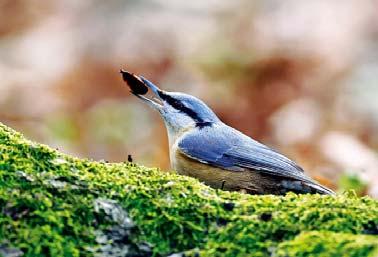
Seeds or fruits that are carried by the wind usually have feathery bristles (dandelion, willow) or wings (maple).
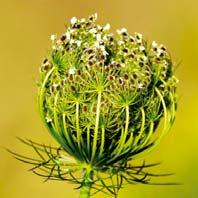


The Flower Quiz What flower am I?
Imagine that you are walking through blooming meadows or beautiful fields. Now, imagine that for a moment you turn into a flower! But which flower? We all know that a red rose is a symbol of passion and love; but what about other flowers? Let's have some fun! We've prepared a few simple statements that will help you determine what flower YOU are.
CHOOSE YOUR ANSWERS, AND CHECK YOUR RESULT ON THE PAGE 11. WHICH STATEMENTS ARE TRUE FOR YOU?
I like to hike in the highest hills possible.
I’m in love.
did you know?
Palms produce the largest seeds in the world, which can be carried by ocean currents for months. The winner, also listed in the Guinness Book of Records, is coco-de-mer, with a seed weighing more than 25 kg.
Living organisms have a limited life span and species need reproduction in order to survive. Reproduction creates new organisms and certain genetic characteristics of parents are passed onto the offspring.
Living organisms can reproduce by sexual or asexual means.
A flower is an organ that is involved in the sexual reproduction in plants. Flowers have male and female reproductive cells which plants use to reproduce.
test your knowledge
Fruits dispersed by animals are often juicy and bright by colour. Animals eat them and then deposit undigested seeds in their feces far from the parent plant.
did you know?
Stem cutting is the most common method of vegetative reproduction of ornamental plants, while stolons or 'runners' are used in the propagation of strawberries.
Certain plants have developed special structures that allow them to selfdisperse their seeds by catapulting them far from the parent plant (e.g. Himalayan balsam plant).
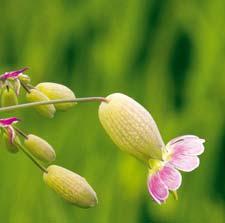


did you know?
The current world record holder for heaviest fruit is a pumpkin that weighed over 800 kg. The heaviest pumpkin grown in Slovenia weighed about 250 kg.
Water-borne seeds are buoyant by being enclosed in corky, waterproof covering or air-containing fruits. Such seeds are normally produced by aquatic and wetland plants.

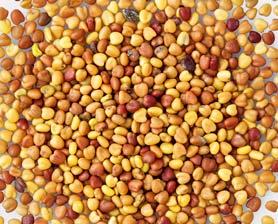


People use seeds and fruit in our diet.
CARROTS
My birthday is between July and September.
I like to jump over rocks on a rainy day.
I love observing the sky!
My favourite colour is purple. like travelling around Slovenia and discovering new places.
I’m not the tallest among the pupils in my class. When I’m sleepy, my eyes begin to feel heavy and become almost egg-shaped. always wear a helmet when skiing.
I’ve got very thick skin. I’m not easily offended.
I’ve got fair skin, so always wear a hat in strong sunlight.
I like eating. Whatever is on the table is fine with me.
I like being in good company.
I’ve got a really trendy hairstyle.
love the colour yellow. My hands are fairly hairy. don't quickly succumb to illnesses. have a very 'sharp' tongue. like to talk back a lot. I'm immune to insect bites and stings.
I'm quite small for my age.
It takes me a long time to wake up in the morning.
I have blue eyes.
I love running barefoot on the grass and in the snow. Tea is my favourite drink.
did you know?
DANDELION did you know?
One orchid can produce up to 4 million seeds!


Orchids need symbiosis or coexistence for their growth and development. This means that when an orchid seed falls to the ground, it can remain there for a long time to wait for suitable conditions. Orchids need the help of a certain fungus, which will help them grow their first leaves, until the plant itself is able to develop with the help of photosynthesis. The symbiotic relationship between the orchid and the fungus continues, even in the opposite sense, when the plant feeds the fungus. It could therefore be said that a relationship is established forever.
ORCHIDS did you know?
One dandelion flower can contain up to 300 seeds!

The leaves of all types of maple make excellent animal feed.
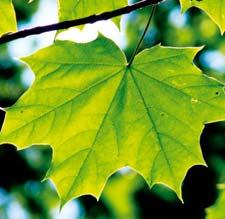
MAPLE did you know?
LILLIES
Lillies can reproduce through the bulb that the plant makes in the ground, or by the seed that develops in the flower?

did you know?
The leaves of carrots have a lot of vitamins and minerals, that is why wild rabbits prefer the upper, green part of carrots to the orange part? Probably because it is necessary to dig up the latter!
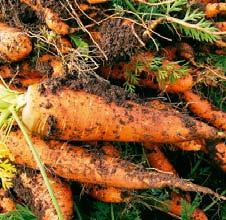
did you know?
The plant is increasingly used in the preparation of food. So, don‘t be surprised if your food in a restaurant, for example spaghetti, comes sprinkled with bladder campion flowers on the top.
did you know?
The plant has very characteristic 'glasses-shaped' round discs that bumblebees like to 'borrow' when flying.

did you know?
The legumes live in symbiosis with bacteria from the genus Rhizobium which are able to bind with nitrogen from the air?
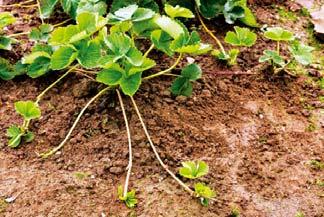
love vanilla and chocolate ice-cream. When I'm embarrassed, I turn completely red and my head becomes round. like collecting stones. don't like waiting in queues, anywhere! can jump more than 20cm off the ground.
I love wet weather and jumping in puddles!
I eat an apple every day.
I have golden hair that shines.
If you look at me for too long, you may go temporarily blind! My favourite hobby is hiking in the high mountain pastures!
I've got green eyes. like climbing trees. My brain works best when others don't – in spring and autumn. love the sun! can't stand strawberries and onions.
8 9 TRIGLAV NATIONAL PARKTRIGLAV NATIONAL PARK
burdock
PLANTS HAVE LOST THEIR SEEDS. Find them on page 9 and fill out the empty fields. Think about how they travel.
Himalayan balsam plant
A B C D E F G
BLADDER CAMPION BUCKLER MUSTARD
FUN and educational
If you have read the kids' newspaper carefully, then you already know that insects play a very important role in pollination.




Did you know?
Bats pollinate bananas. Hazelnuts, walnuts, and other windpollinated plants are not dependent on pollinators, while some plants are pollinated with the help of water or on their own.
When you have calculated the points assigned to the statements you selected, you can read the answer key below and learn into which flower you would change.
BURNT-TIP ORCHID

The petals and the outer side of the hood in open blooms are dark crimson red.
The orchid can be found at various sites across Slovenia.


It is only 10-15 cm high and has tiny flowers.
At first the plant displays a densely packed oval-shaped inflorescence.
The sepals and the petals except for the lower lip form a hood and are pointed upwards.
rebus PUZZLE

Solve it and find the name of the plant.
If a letter is crossed out, it does not appear in this word. An equal sign between letters means that you should switch the letter on the left with the one on the right.
S = T
D = B
Hint: You can find a themed trail on the Pokljuka plateau near Goreljek and learn all about it.
ARNICA MONTANA
Arnica is an alpine plant species easily recognisable for its orange-yellow flowers.


It has spear-shaped leaves with coarse hairs, measuring up to 7 cm in length.
Arnica montana has anti-inflammatory and antiseptic properties, which means we can use it to disinfect skin wounds and sores.
Arnica montana is tricky plant: it is highly beneficial for external conditions but dangerous if consumed.
Hint: We call it »queen of the Alps«.
BLACK VANILLA ORCHID
The strong scent of vanilla is a reminder that the plant's relatives are tropical orchids. Some people say that black vanilla orchids smell like chocolate.
Edelweiss is mainly found on limestone bedrock at an altitude between 1,800 and 3,000 meters.

According to popular beliefs, the edelweiss is given to a loved one as a pledge of commitment.
The plant blooms between July and September.
Edelweiss can be found on rock-strewn grasslands, limestone rocks and, more rarely, on meadows.
CAULIFLOWER
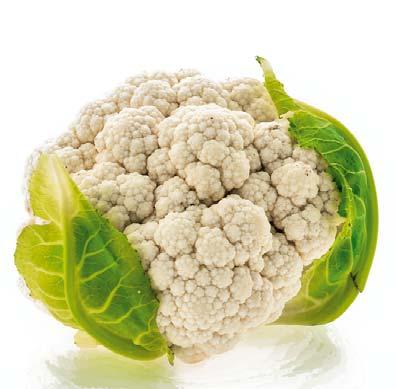
The edible part of cauliflower is a fleshy inflorescence.
During growth, the inflorescence is surrounded by hearty leaves that protect the curd from sunlight and discoloration.
Cauliflower requires lots of nutrients. It grows best in the field, in the company of other cauliflowers.


CLUSIUS' GENTIAN
Clusius' gentian is one of the most common plants whose flowers adorn limestone mountain meadows and rocky grasslands in the spring. Its true-blue blossoms can be seen in montane sites as well as in lower-lying alpine valleys.
The plant is also known as flower of the sweet-lady'.
Size: 5 to 15 cm
Habitat: moist and acidic soil
Distribution: in Slovenia, found on high moors in the Pokljuka, Jelovica, and Pohorje regions
Interesting fact: Lower parts die and turn into peat while upper parts continue to grow.
Hint: A



Hint: A protected plant with very tiny seeds.
Did you know?
The plant has dark red flowers and a round-shaped inflorescence when in full bloom. It thrives on rocky slopes.

DID YOU KNOW?
Nigritella lithopolitanica has been included in the Red List of Threatened Species.
Black vanilla orchids grow up to 20 cm high.
BROCCOLI
Size: 30 to 80 cm
Habitat: always on limestone soils and above 1500 m above sea level.
Distribution: Julian Alps
Interesting fact: The flower with bluish flowers is a rare plant that is a distant relative of carrots and parsley.
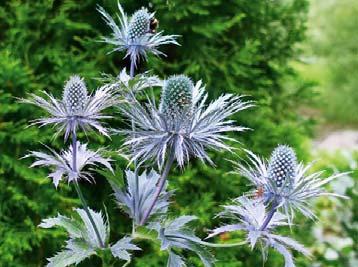
Size: 20 to 50 cm
Habitat: bright beech forests, among shrubs and settled gravel
Distribution: mainly in the Alpine region
Interesting fact: This largest orchid in Europe can even be found in the surroundings of Veliko polje.
Do you have a question related to animals, plants, rocks, or anything that can be found in the natioanl park? Are you interested why bears don‘t sleep the whole time during winter? Send your question to skupnost.sol@tnp. gov.si or toTriglavski narodni park, Ljubljanska 27, 4260 Bled, Slovenia. You will be able to read the answer in the next issue of the kids‘s newspaper.
Similar in the shape of the head to a cauliflower, but with one big difference: it's normally dark green in colour. Its head, resembling a tree, is surrounded by leaves; the leaves do not cover the head as in cauliflower and that's why broccoli florets take a green hue.
In the garden, broccoli grows best in the spring and autumn.

It is a bad companion to strawberries and onion.
This 10-cm-high perennial produces deep-blue flowers; if you spot one with white flowers, you have found a Clusius' gentian with an albino mutation.
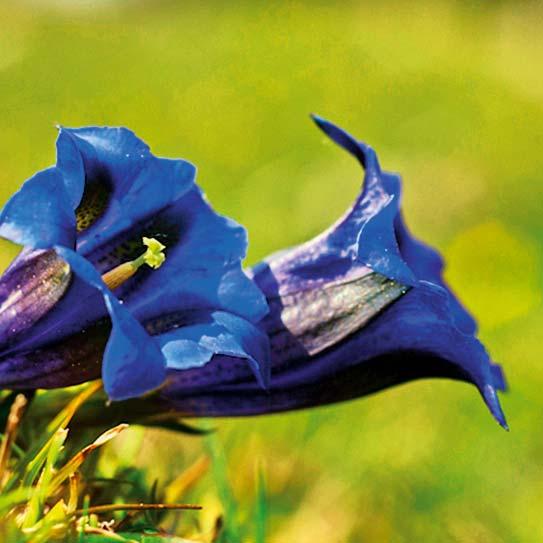
GLOBEFLOWER

The globeflower grows on humid soil. In Slovenia, it is also called 'the golden apple'.
The plant has bright yellow, globeshaped flowers up to 3 cm across. In Slovenia, the globeflower is typically found in montane and highaltitude pasturelands.
10 11 TRIGLAV NATIONAL PARKTRIGLAV NATIONAL PARK
Answer key FLOWER QUIZ
EDELWEISS
+
S
HONEY BEE BUMBLEBEESOLITARY BEEHOVERFLY
AL + + S
Indigenous species of domestic animals


cika
I'm lighter than other cattle breeds, and I have shorter legs so I can climb steep slopes and graze on mountain pastures. My eyes are adapted to light....


BOVec sheep DREŽNIca goat


I'm well adapted to modest conditions ... my milk is made into delicious Bovec cheese.


I'm a skilled climber and I can graze in areas where cows cannot go. I'm energetic and stubborn, so I need a good and strong owner.





People have shaped the cultural landscape out of their need to survive
When animals are grazing on high pastures, hay is made on meadows in the valleys to secure the feed for winter months. In the past, meadows were mowed manually using scythes, which is a difficult skill to learn! Even the steepest slopes were mowed as forage was always in short supply.
Cut grass had to be dried properly to be suitable for animal feed in the coming months. Traditionally, grass is left on the ground for several days, turned a few times, stacked before dew, and then spread out again.
This method of drying hay is also useful because meadow plants are rapidly maturing in this period, dispersing their seeds, which means that meadows are regenerating naturally and their rich species diversity is preserved.

Due to unpredictable weather and frequent precipitation, hayracks are the most appropriate way of drying hay. And hayracks come in many shapes and sizes!
did you know?
In the Bovec area, hay was stacked onto cut-off spruce trunks known as ‚ostrgači‘.




In some areas, hay is kept in special structures - haylofts or other hay storing structures scattered across the countryside. Haylofts can be small and simple, fully wooden or stone-built.
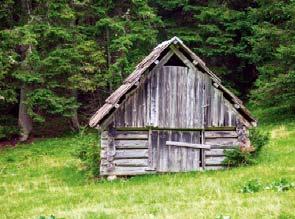
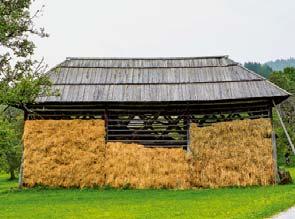
did you know?
As a result of discontinuation and decrease in farming, grazing and grass mowing, former meadows and pastures are quickly overgrowing.

People created meadows and pastures below the tree line by cutting out forests to gain grasslands and arable land. Grasslands formed naturally only above the tree line, where low temperatures are the main factor preventing the growth of extensive forest stands.

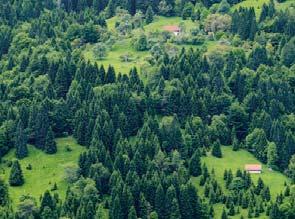
did you know?
Nature is a patient teacher, selflessly revealing its treasures and secrets, if only we can appreciate their unique value. It is therefore very important that we behave properly in a natural environment.
Sometimes things may go wrong ... indigenous breeds of domestic animals - the Cika cattle, Bovec sheep and Drežnica goat – are the main characters in our cartoons.



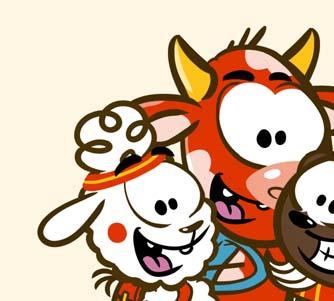
Look at what they are up to.

12 TRIGLAV NATIONAL PARKTRIGLAV TRIGLAV NATIONAL PARK www.tnp.si Cover Photography Orchid Tanja Menegalija Content Maja Fajdiga Komar Tina Komac Jurka Lesjak mag. Tanja Menegalija Mojca Pintar Drawings Invida d.o.o. Mojca Pintar Map Author Jaka Modic Photos Arhiv TNP Florijan Tišler platforma Pixabay platforma Freepik Proofreading and translation Darja Pretnar Editor Mojca Pintar Design Barbara Bogataj Layout Mojca Pintar and Gaya d.o.o. Printing Gaya d.o.o. TRIGLAVSKI NARODNI PARK 2022/2023 Year 6, No 7 May 2023 Published by Triglav National Park Ljubljanska cesta 27 4260 Bled, Slovenija T: 04 578 02 00 E: triglavski-narodni-park @tnp.gov.si www.tnp.si For TNP Dr. Tit Potočnik Triglav National Park Director Bled, may Circulation 1.000 copies Follow us: The project LIFE FOR SEEDS (LIFE20 NAT/SI/000253) is co-financed by the European Union's LIFE Programme, Sigrid Rausing Trust and the Ministry of Public Administration.
cters
PARK
USEFUL INFORMATION


































































































































































































































































































































